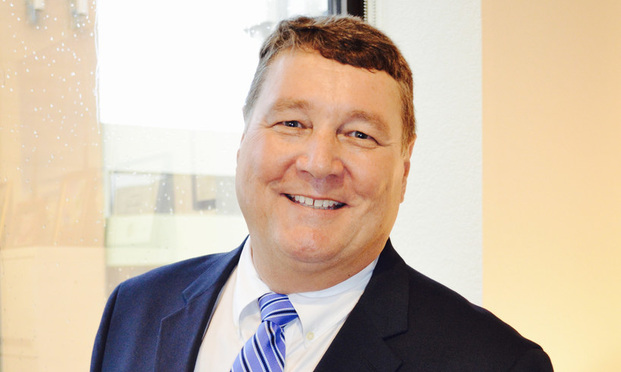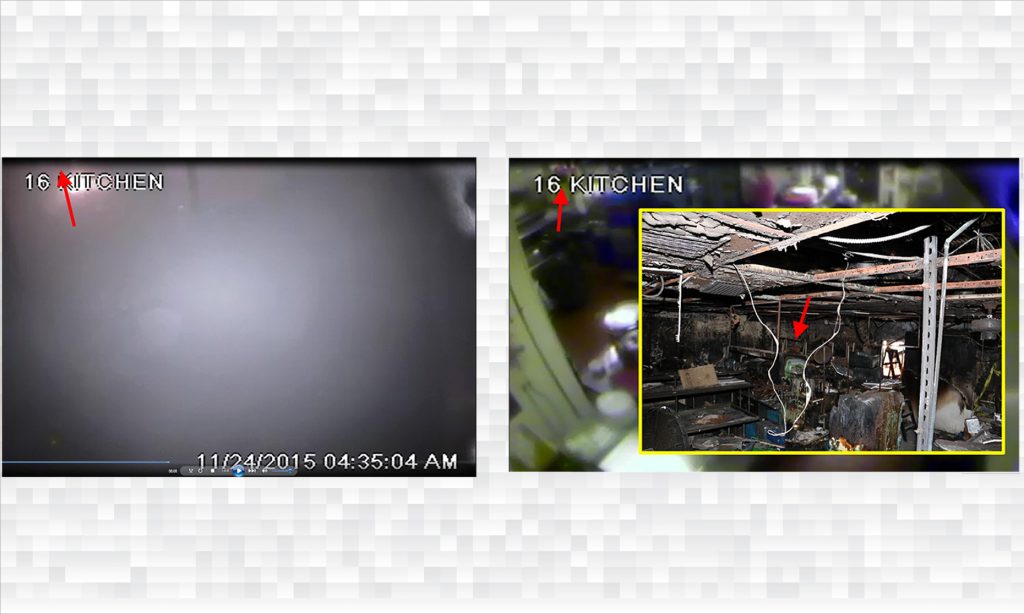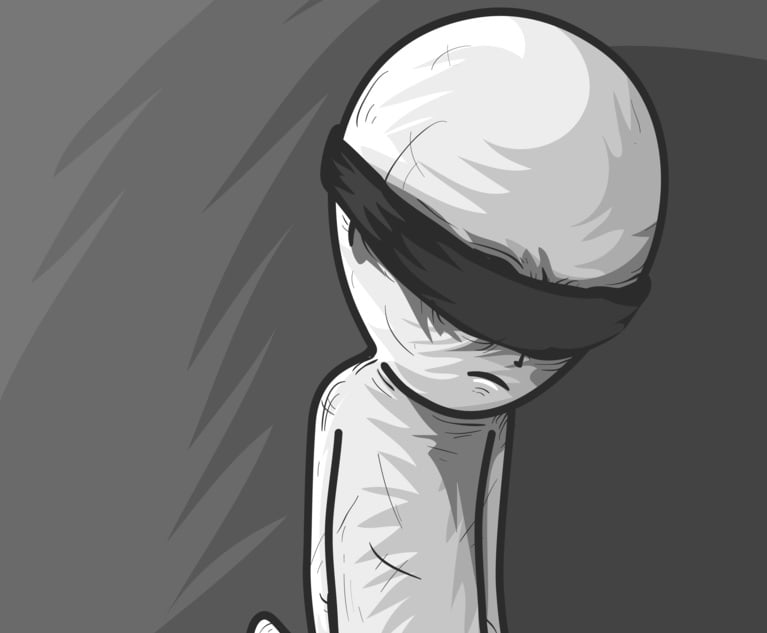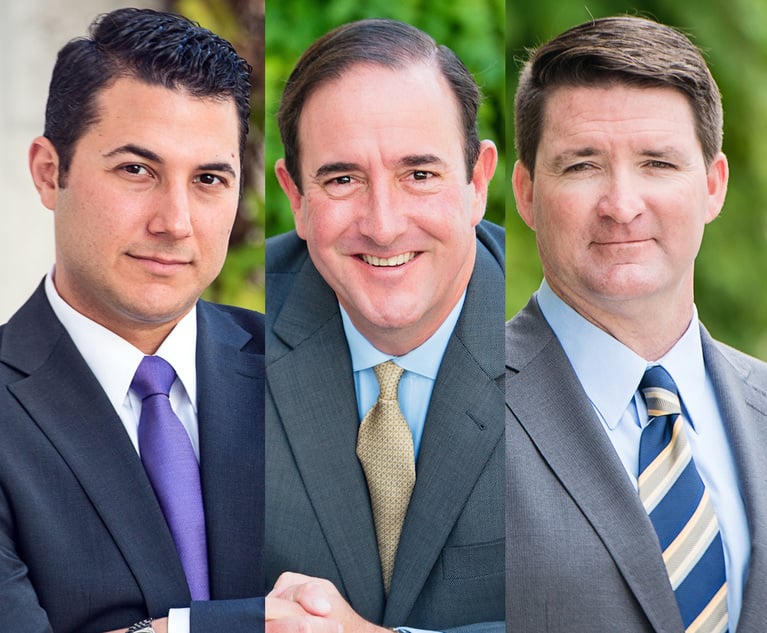Miami Attorney Scorches $2.25 Million Fire Insurance Claim Against His Client
Miami attorney Peter R. Restani represented refrigeration company Turbo Air against a $2.25 million insurance claim by three insurance carriers. The plaintiffs alleged a design defect in a Turbo Air-manufactured freezer caused the fire that destroyed Fort Lauderdale's Dapur Asian Tapas Restaurant in November 2015. However a fire origin expert hired by Restani offered a much different theory, involving a dryer, linens and combustible cooking oils.
November 05, 2018 at 02:10 PM
5 minute read
 Peter R. Restani, partner with Boyd Richards Parker & Colonnelli. Courtesy photo
Peter R. Restani, partner with Boyd Richards Parker & Colonnelli. Courtesy photo
The term spontaneous combustion can often be found in late-night, beer-fueled conversations and MythBusters marathons. Despite the accepted science that yes, such a phenomenon does take place — although perhaps not in human beings — it's commonly relegated to falling in the same breath as a snicker or goofy rhetorical question.
For Peter Restani however, spontaneous combustion is no laughing matter. It may very well have been the thing that exonerated the Miami lawyer's client, refrigerator manufacturer Turbo Air, from having to pay out $2.25 million in a fire loss.
“It's a known scientific occurrence but is rare,” Restani told the Daily Business Review. The Boyd Richards Parker & Colonnelli partner said the theory was presented by an origin-of-fire expert, explaining how the blaze broke out at Fort Lauderdale eatery Dapur Asian Tapas Restaurant and Lounge on Nov. 24, 2015. In addition to forcing the restaurant to close its doors, the fire also damaged the shopping center the restaurant was situated in as well as a neighboring building.
The spontaneous combustion hypothesis was not shared by the restaurant's insurers, Aspen Specialty Insurance Co. The insurance provider — along with General Star Indemnity Co. and Nationwide Insurance Co., who insured the building in which Dapur was located and the nearby property respectively — filed a negligence lawsuit against Turbo Air in December 2016. The complaint alleged that a defective commercial freezer manufactured by the refrigeration company and used by Dapur was to blame for the fire.
Read the complaint:
According to Restani, the plaintiffs were seeking to the obtain the collective $2.25 million in adjusted claims paid out to their insureds from Turbo Air.
“The amount wasn't litigated, they just agreed to it. There were a lot of individual itemized losses, pieces of furniture and so forth,” he said.
The insurance carriers and their counsel argued that the Turbo Air freezer used by Dapur experienced an electrical failure that in turn triggered the fire.
“Most of the fire was in the kitchen but there was smoke damage elsewhere,” Restani said. “The sequence of events they alleged was that this was a failure of one of the capacitors on the top of the freezer.” The plaintiffs contended that this caused the freezer to overheat and was the place of the fire's origin. Additionally, they insisted the pattern of the ensuing burn and smoke damage emanated from the freezer's location and into the surrounding kitchen and restaurant, further reinforcing their argument.
Although both parties called upon the testimony of an electrical engineer and origin of fire specialist as expert witnesses, the findings articulated by the defendant's ultimately won out.
“A microscopic analysis of the [wiring of the freezer] did not show high heat,” Restani said, noting that this precluded one of the freezer's capacitors as the source of the fire.
“Our origin of fire expert disagreed that the patterns emanated outward from the turbo freezer,” he added. Restani and his expert pointed out that the kitchen contained a motion-activated security camera that had been recording during the fire in question.
“One of the things you could see was a washer-dryer [employees] would use for linens,” he said. “When the fire started, enough smoke developed to trigger the motion camera. When that happened you could see a round, orange glow from the same location from where you formerly saw the dryer.”
After the remnants of the dryer were sent out to a lab, it was found to have contained “volatile oils and animal fats” as well as “linens and napkins.”
“The conclusion of our fire origin expert was that dryer was left on, these linens and combustibles were left in it, and a spontaneous combustion occurred,” Restani said, attributing the orange glow captured on security footage to the oxidization within the dryer.
“We had one exhibit that showed the lighted kitchen versus the darkened kitchen to compare where the dryer was before and after the fire,” Restani said when asked about the entry of particularly compelling evidence in his client's favor.
View the exhibit:

Ultimately, Restani attributed the verdict to a matter of simple science.
“What we had to do was teach all of this science to the jury so once they understood the concepts then they could logically reason out the case,” he said. “Once you wrap your head around the science, it's not that bad.”
Neither Mark C. Cavanaugh nor Amy C. Wright, the respective attorneys for Aspen Specialty Insurance Co. and General Star Indemnity Co., responded to requests for comment by press time. Nationwide Insurance Co.'s counsel Trenton Leigh, who is based out of the Tampa office of statewide law firm Groelle & Salmon, also did not reply.
Case: Aspen Specialty Insurance Co. v. Turbo Air Inc.
Nationwide Insurance Co. v. Turbo Air Inc.
General Star Indemnity Co. v. Turbo Air Inc.
Case No.: 16-62694-CIV-DIMITROULEAS
Description: Negligence
Filing date: Dec. 15, 2016
Verdict date: May 23, 2018
Judge: U.S. District Judge William P. Dimitrouleas
Plaintiffs attorneys: Peter R. Restani and Robert E. Menje, Boyd Richards Parker Colonnelli, Miami
Defense attorneys: Mark C. Cavanaugh, Dugan, Brinkmann, Maginnis and Pace, Philadelphia (for Aspen Specialty Insurance Co.); Trenton Leigh, Groelle & Salmon, Tampa (for Nationwide Insurance Co.); and Amy C. Wright, Munck Wilson Mandala, Dallas (for General Star Indemnity Co.)
Verdict amount: Defense verdict
Related stories:
Trial by Fire: Lawyer's Pants Ignite During Arson Case
3rd District Court of Appeal Upholds 1.5 Multiplier for Citizens Policyholder
This content has been archived. It is available through our partners, LexisNexis® and Bloomberg Law.
To view this content, please continue to their sites.
Not a Lexis Subscriber?
Subscribe Now
Not a Bloomberg Law Subscriber?
Subscribe Now
NOT FOR REPRINT
© 2025 ALM Global, LLC, All Rights Reserved. Request academic re-use from www.copyright.com. All other uses, submit a request to [email protected]. For more information visit Asset & Logo Licensing.
You Might Like
View All
'I've Seen Terrible Things': Lawyer Predicts Spike in Hazing Suits

Florida Retention Ponds Scrutinized in Lawsuit After Latest Child Drowning
Trending Stories
Who Got The Work
J. Brugh Lower of Gibbons has entered an appearance for industrial equipment supplier Devco Corporation in a pending trademark infringement lawsuit. The suit, accusing the defendant of selling knock-off Graco products, was filed Dec. 18 in New Jersey District Court by Rivkin Radler on behalf of Graco Inc. and Graco Minnesota. The case, assigned to U.S. District Judge Zahid N. Quraishi, is 3:24-cv-11294, Graco Inc. et al v. Devco Corporation.
Who Got The Work
Rebecca Maller-Stein and Kent A. Yalowitz of Arnold & Porter Kaye Scholer have entered their appearances for Hanaco Venture Capital and its executives, Lior Prosor and David Frankel, in a pending securities lawsuit. The action, filed on Dec. 24 in New York Southern District Court by Zell, Aron & Co. on behalf of Goldeneye Advisors, accuses the defendants of negligently and fraudulently managing the plaintiff's $1 million investment. The case, assigned to U.S. District Judge Vernon S. Broderick, is 1:24-cv-09918, Goldeneye Advisors, LLC v. Hanaco Venture Capital, Ltd. et al.
Who Got The Work
Attorneys from A&O Shearman has stepped in as defense counsel for Toronto-Dominion Bank and other defendants in a pending securities class action. The suit, filed Dec. 11 in New York Southern District Court by Bleichmar Fonti & Auld, accuses the defendants of concealing the bank's 'pervasive' deficiencies in regards to its compliance with the Bank Secrecy Act and the quality of its anti-money laundering controls. The case, assigned to U.S. District Judge Arun Subramanian, is 1:24-cv-09445, Gonzalez v. The Toronto-Dominion Bank et al.
Who Got The Work
Crown Castle International, a Pennsylvania company providing shared communications infrastructure, has turned to Luke D. Wolf of Gordon Rees Scully Mansukhani to fend off a pending breach-of-contract lawsuit. The court action, filed Nov. 25 in Michigan Eastern District Court by Hooper Hathaway PC on behalf of The Town Residences LLC, accuses Crown Castle of failing to transfer approximately $30,000 in utility payments from T-Mobile in breach of a roof-top lease and assignment agreement. The case, assigned to U.S. District Judge Susan K. Declercq, is 2:24-cv-13131, The Town Residences LLC v. T-Mobile US, Inc. et al.
Who Got The Work
Wilfred P. Coronato and Daniel M. Schwartz of McCarter & English have stepped in as defense counsel to Electrolux Home Products Inc. in a pending product liability lawsuit. The court action, filed Nov. 26 in New York Eastern District Court by Poulos Lopiccolo PC and Nagel Rice LLP on behalf of David Stern, alleges that the defendant's refrigerators’ drawers and shelving repeatedly break and fall apart within months after purchase. The case, assigned to U.S. District Judge Joan M. Azrack, is 2:24-cv-08204, Stern v. Electrolux Home Products, Inc.
Featured Firms
Law Offices of Gary Martin Hays & Associates, P.C.
(470) 294-1674
Law Offices of Mark E. Salomone
(857) 444-6468
Smith & Hassler
(713) 739-1250








